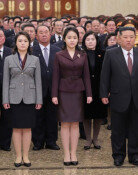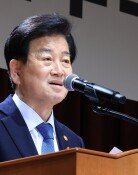4.15 Million Young Adults without Jobs
4.15 Million Young Adults without Jobs
Posted May. 09, 2007 09:04,
Last year, I worked at Dongdaemun Market for a short period, but I quit because it was too difficult.
Lee (23) graduated from a junior college in 2005 with a major in fashion design. Her mother runs a small business and gives her an allowance of about 400,000 won per month, allowing her to pay for cellular phone bills, food, and such. This has labeled Lee as a kangaroo kid.
She said, Im not desperate for money and there is no job I would like to pursue at the moment, so Im taking a break. Lee also adds, Many of my friends are in similar situations.
There are other young adults like Lee, who forego the job search, and that number continues to grow. Statistically, unemployment numbers are low, but an analysis portrays an anomaly in employment rates which are not improving.
Citizens who do not look for jobs are not categorized as unemployed.
Yoo Gyeong-joon, a researcher at the Korea Development Institute (KDI), stressed that fact in a report on Analysis of Factors in Current Decline of Unemployment and Employment Rates.
According to the analysis, this years rate of economic growth was predicted to be lower than that of the previous year. During the first quarter of 2007, unemployment rates (ratio of unemployed persons to economically active population) were at 3.6 percent, demonstrating a 0.3 percent decline in comparison to the same quarter last year.
Low unemployment rates usually signify high employment rates (ratio of employed persons to production capable population), however, this years first quarter employment rates were 58.6 percent, a marginal 0.1 percent increase year-on-year.
Researcher Yoo found that this anomaly in numbers was due to the teens and young adult population who voluntarily choose not to work.
The previous year, young adults (15-24 yrs) who were not a part of the economically active population were numbered at 4,186,900.
28,500 of these youths are categorized as the discontent unemployed; they choose not to participate in the work force due to disparities in wage or working conditions. 4,400 youths are labeled the confined unemployed; they choose not to work because of other responsibilities such as childcare or housework.
Besides the two aforementioned groups, there are also the youths who simply give up entering the work force; they are regarded the truly economically inactive population. In 2005 that number was 4,053,300; last year, 4,154,000; and over the course of just one year, the number has increased by over 100,000.
The truly economically inactive includes both jobless youths and college students.
This report also explained the employment contributions of middle-aged (25-64) to senior (65 and above) citizens have steadily increased since 2002, whereas employment of young adults steadily decrease thereby revealing the true nature of abnormal employment rates. Employment contributions of young adults fell from 4.8 percent in 2005 to 4.2 percent in 2006.
sanjuck@donga.com






![전기매트 틀고 자면 몸에 전자파 쌓인다?” 직접 측정해보니 [알쓸톡]](https://dimg.donga.com/c/138/175/90/1/wps/NEWS/IMAGE/2026/01/02/133079758.3.jpg)
